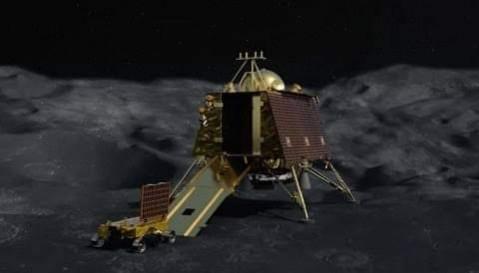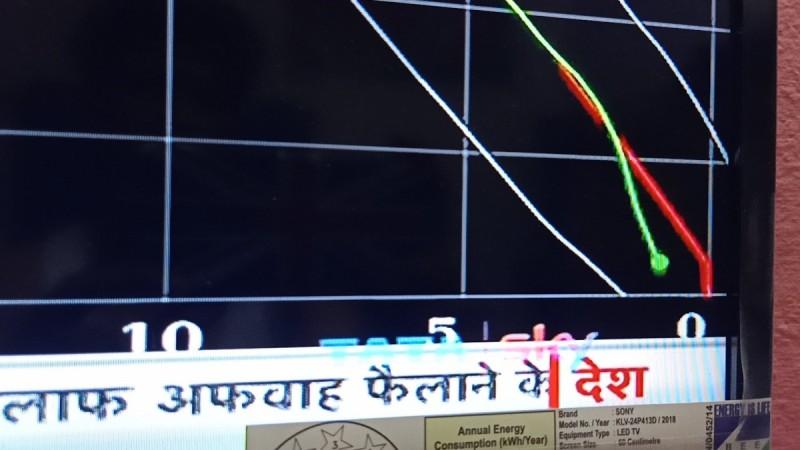
Is India's second Moon mission a failure, considering the inability of the ground stations to get signals from the Vikram lander? The ground control stations monitored the lander until it reached within 2.1 km of the lunar surface during a powered descent on the early hours of Saturday, watched by Prime Minister Narendra Modi. Indian Space Research Organisation (ISRO) chairman Dr K Sivan later said the ground control had ceased receiving signals from the lander and was still analysing data.
The lander designed by the Space Applications Centre (SAC) in Ahmedabad is an autonomous spacecraft that works independently of the ground control to select the best place to land and self-regulate the descent to achieve zero vertical and horizontal velocity at the point of impact, according to the ISRO. While Vikram was equipped to choose the best level landing site, it could land on slopes of up to 12 degrees.
The vehicle carrying Pragyan rover was in superb health until the moment the ground control ceased receiving its signals. This was 2.1km above the lunar surface, the spacecraft following the exact trajectory mapped out for its landing until then. The spacecraft would have needed less than two minutes for the touch down at this point, ending the '15 minutes of terror' as Dr Sivan had earlier described the uncertainties facing a controlled landing of a spacecraft some 400,000km from the Earth.
The Vikram lander was built to last one lunar day, which equals 14 Earth days. Soon after the touchdown, it was expected to open its hatch and lower the ramp for the six-wheeled Pragyan rover to roll down to the lunar surface. Pragyan was expected to explore the vicinity of the landing site and conduct experiments on the lunar surface using onboard scientific equipment.

It is highly unlikely that the autonomous lander, which had sufficient three-dimensional safeguards to control tilting over or crashlanding, was destroyed on impact, some experts believe. If it's only a temporary glitch that is preventing the signals from reaching the Earth stations, there is every chance that the ISRO could revive the line of communication.
Vikram lander has three-day communication capability it being able to 'talk' to the rover that could travel as far as 500 metres from the lander. The rover's communication link is only to the lander. Vikram could also communicate with the orbiter Chandrayaan 2, which is maintaining a stable orbit that is 95km at the closest point to the lunar surface and 125km at the farthest, according to the ISRO website. Vikram had begun the descent from an altitude of 35km.
Therefore, space engineers do not entirely rule out the possibility that Vikram lander could resume communication with the ground control and give the good news that it was ready for deploying the rover.
Watch Live: Honorable Prime Minister Shri. Narendra Modi Addressing the Nation https://t.co/SAGMyi1Nkp
— ISRO (@isro) September 7, 2019
Even if Vikram and Pragyan are lost forever, the orbiter Chandrayaan 2 has enough scientific equipment to procure valuable data and would remain on the orbit for a year, which could be extended by another year. Of the eight equipment the orbiter is carrying, only two are improved versions of what Chandrayaan 1 carried. The other six are entirely new equipment sophisticated to enough to return a variety of data to the Earth.
ISRO wisely did not put all its eggs in one basket and distribute the scientific payload among the three separate vehicles. Of the 14 equipment that the mission has carried to the lunar orbit, eight are on the orbiter and are fit to carry out their scheduled experiments unhindered. Unless Vikram is revived, any data generated by the four equipment on it and the two on Pragyan will not be available.
Prime Minister Modi said the nation was the ISRO staff appreciating their courage and resilience in the face of heavy odds in achieving what they have achieved. Indian space engineers had the courage to choose one of the riskiest landing areas in the southern polar region where no nation had landed. That itself showed their true courage, according to observers.









